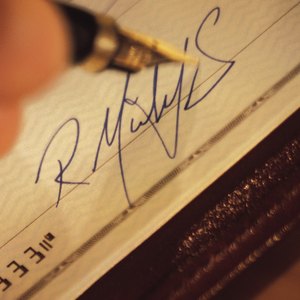
While the codes on the personal checks of today might bewilder you, before 1911, banks lacked a universal code system, which made for a confusing process for people who wanted to transfer their assets. Now, each bank has its own unique routing number, which is printed on an individual's personal checks, along with other types of codes -- account numbers and check numbers -- that make it easy to identify important pieces of financial information.
Routing Number
All personal checks contain a magnetic ink character recognition line at the bottom of the check. The bank's routing number is the first number in the MICR. The routing number is an unique number assigned to the bank. It's always nine digits and begins with a 0, 1, 2 or 3.
Account Number
Your personal checking account number is also located in the MICR. It's the second or third string of numbers in the line, depending on how the check is printed.
Check Number
Each personal check is assigned a unique number, and each personal check in a book of checks is numbered in sequential order. The check number is located as the second or third string of numbers in the MICR and also in the top right corner of each check. Check numbers help you keep track of each check you write.
Fraction Code
The fraction code on a check -- located at the top of the check, between your name and address and the check number -- used to be relied on as a routing code to ensure the check went to the correct bank for payment. The fraction code has three basic parts. The first part of the code is the number of the city -- numbers one to 49 -- or state -- numbers 50 and up -- of the issuing bank. The second part of the fraction code is the bank's American Banking Association institution identifying number. This three-digit code forms digits five through eight of the bank's routing number -- included in the MICR line at the bottom of the check -- issued by the ABA. The third part of the fraction code is the first four digits of the bank's routing number. Since MICR codes are now used, the fraction code is rarely used, but it is still printed on personal checks. However, if the MICR line -- at the bottom of the check -- is torn or unreadable, banks can use the fraction code for identifying and routing purposes.
References
Resources
Writer Bio
Based in Texas, Cynthia Measom has been writing various parenting, business and finance and education articles since 2011. Her articles have appeared on websites such as The Bump and Motley Fool. Measom received a Bachelor of Arts in English from the University of Texas at Austin.

